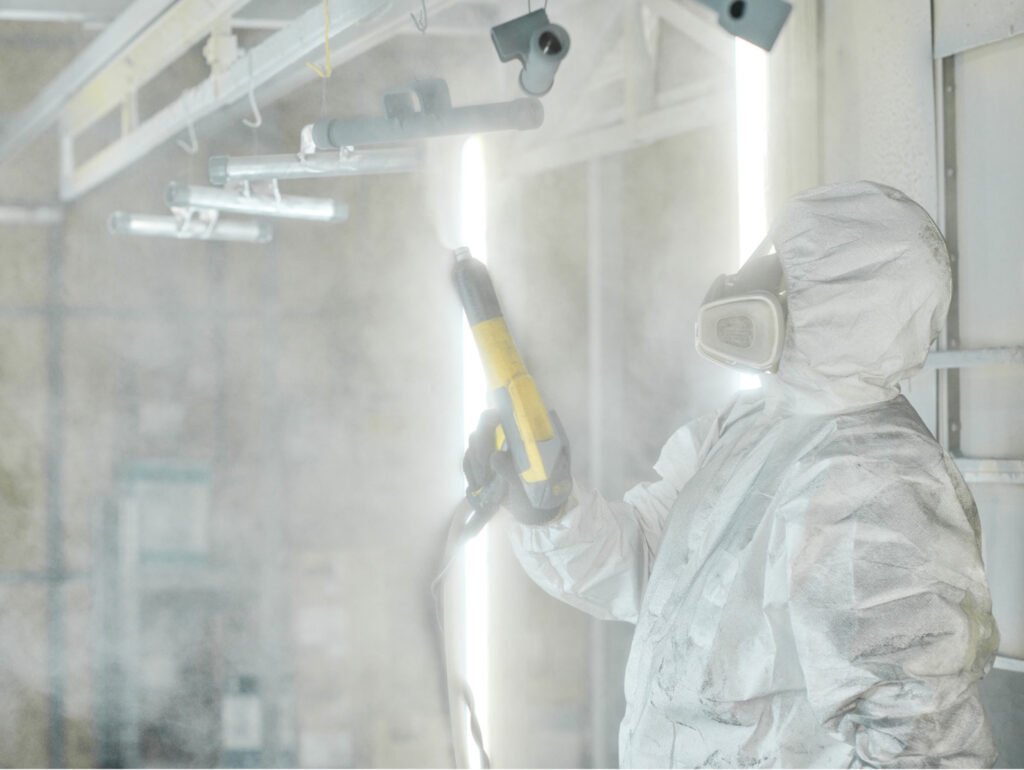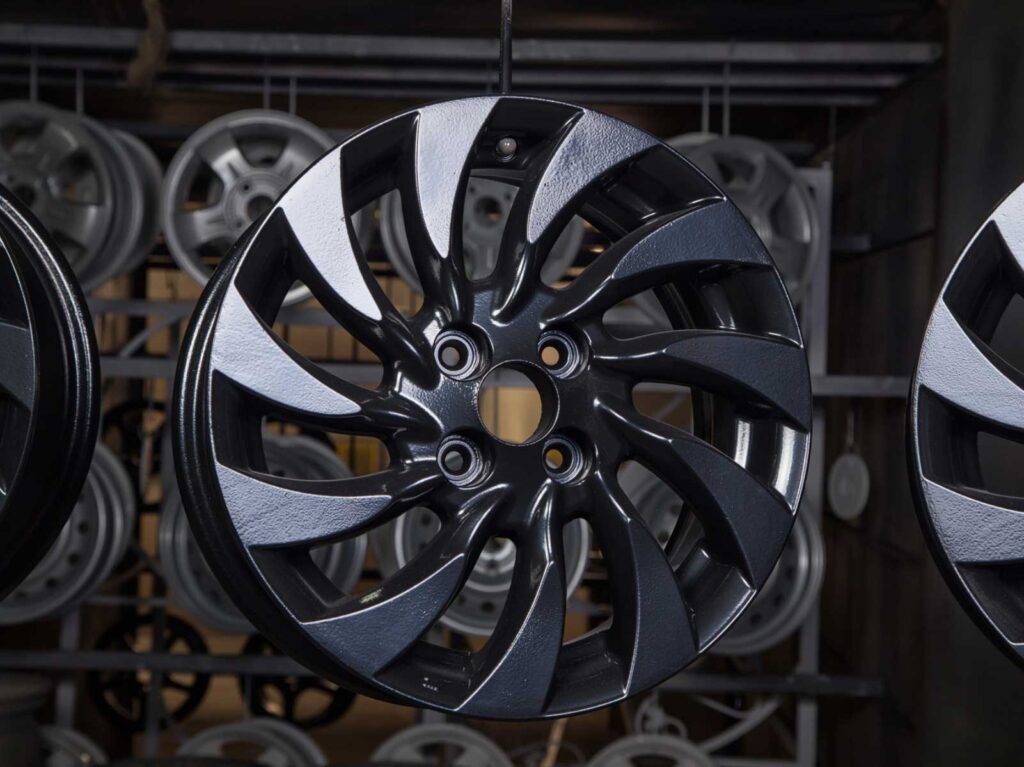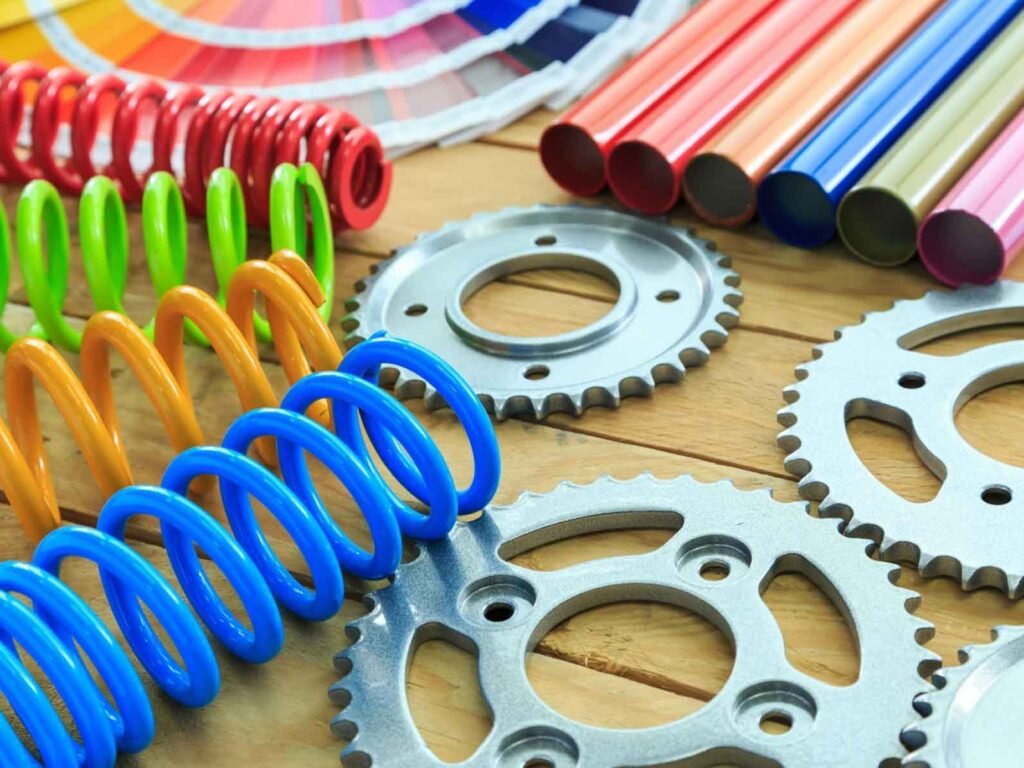Rust on metal surfaces isn’t just an eyesore—it’s a serious problem that can compromise the adhesion and longevity of your powder coating. Without proper rust removal, the coating won’t bond effectively, leading to peeling, flaking, and a host of other issues that can significantly reduce the durability of your product.
The rust removal process ensures that all traces of rust are thoroughly cleaned from the metal surface, leaving it smooth and uncontaminated. This clean surface allows the powder coating to bond effectively, ensuring a uniform, durable, and aesthetically pleasing finish.
Let’s dive into the methods and best practices for rust removal pretreatment before powder coating.
Methods of Rust Removal: Physical and Chemical Approaches
Rust removal can be achieved through physical or chemical methods.
Physical rust removal methods include techniques like sandblasting, shot blasting, sanding with sandpaper, and brushing with steel brushes. Sandblasting and shot blasting, which we discussed earlier, are particularly effective for quickly removing rust from large surfaces. These methods involve mechanically abrading the rust away, leaving a clean, roughened surface that is ideal for coating.
Chemical rust removal methods involve using solutions like hydrochloric acid, sulfuric acid, and phosphoric acid to dissolve rust through a process called acid dipping. The primary principle here is the chemical reaction between the metal oxides (rust) and the acid solution, which effectively breaks down the rust and removes it from the surface. The key chemical reactions involved in this process include:
Fe₂O₃ + 6HCl → 2FeCl₃ + 3H₂O
Fe₃O₄ + 4H₂SO₄ → FeSO₄ + Fe₂(SO₄)₃ + 4H₂O
Fe₂O₃ + 3H₂SO₄ → Fe₂(SO₄)₃ + 3H₂O
3FeO + 2H₃PO₄ → Fe₃(PO₄)₂ + 3H₂O
To prevent issues like hydrogen embrittlement and acid fumes during pickling, as well as to shorten the pickling time and improve the quality of rust removal, various additives are commonly added to the pickling solution. These additives include corrosion inhibitors, surfactants, and defoamers. Commonly used corrosion inhibitors include thiourea and hexamethylenetetramine. Surfactants such as Pingpingjia and OP emulsifiers are also frequently used.
For special steels or non-ferrous metals, mixed acids or specific acids like oxalic acid, chromic acid, and citric acid are often employed for pickling and rust removal. These specialized treatments help ensure effective cleaning while minimizing damage to the metal surfaces.Representative Rust Removal Acid Solution Formulations and Process Conditions
| Formula & Process Conditions | Formula 1 | Formula 2 | Formula 3 |
| Hydrochloric Acid (g/L) | 100-150 | — | — |
| Sulfuric Acid (g/L) | — | 100-200 | 150-200 |
| Sulfamic Acid (g/L) | — | 2-5 | 2-5 |
| Hexamethylenetetramine (g/L) | 2-5 | — | — |
| Surfactant (g/L) | 10 | 10 | 10 |
| Tank Temperature (°C) | 30-40 | 40-60 | 60-70 |
| Immersion Time (min) | 10-25(depending on rust condition) | 10-25 (depending on rust condition) | 10-25 (depending on rust condition) |
To prevent the freshly pickled metal surface from rusting again and to avoid carrying residual acids into the phosphating process, it’s essential to perform a neutralization treatment using a 3-5 g/L sodium carbonate (Na₂CO₃) solution. After neutralization, the workpiece should be thoroughly rinsed with clean water until all residues are completely removed.
Comparison of Advantages and Disadvantages of Hydrochloric Acid, Sulfuric Acid, and Phosphoric Acid Rust Removal Solutions
| Hydrochloric Acid Solution | Sulfuric Acid Solution | Phosphoric Acid Solution | |
| Processing Conditions | |||
| Concentration (%) | 5-15 | 10-25 | 5-20 |
| Temperature (°C) | < 45 | 60-80 | 40-80 |
| Advantages | 1. Fastest processing speed 2. Minimal impact of hydrogen embrittlement 3. No sludge residue 4. Economical 5. Low processing temperature | 1. Fast processing speed 2. Can be used for stainless steel and aluminum 3. Affordable | 1. No corrosive residue, safe 2. Forms protective film after rust removal 3. Minimal impact of hydrogen embrittlement |
| Disadvantages | 1. Cannot be used for stainless steel and aluminum 2. Chlorine gas has a certain level of toxicity and corrosiveness | 1. Easily causes hydrogen embrittlement 2. High processing temperature | 1. Slower processing speed 2. Higher cost |
To shorten the surface treatment time of workpieces, a process that combines degreasing and rust removal in one step is often used. The simplest method involves adding OP emulsifier or similar additives to the rust-removal acid solution, which allows both degreasing and rust removal to be accomplished simultaneously. This process is known as the “two-in-one” method.
Initially, the “two-in-one” process was only suitable for workpieces with light oil contamination and minor rust. However, with advancements in science and technology, its application range has significantly expanded, making it useful for more challenging conditions.
Formulations and Process Conditions for the “Two-in-One” Degreasing and Rust Removal Solution
| Formula & Process Conditions | Formula 1 | Formula 2 |
| Hydrochloric Acid (g/L) | 100-150 | — |
| Sulfuric Acid (g/L) | — | 200-250 |
| OP Emulsifier (g/L) | — | 15-20 |
| Sodium Benzenesulfonate (g/L) | 50 | — |
| Sulfamic Acid (g/L) | 10 | 1-2 |
| Tank Temperature (°C) | 30-40 | 70-80 |
| Processing Time (min) | 10-20 | 15-30 |
Conclusion
Proper rust removal is essential for a strong, lasting powder coating. Whether using physical or chemical methods, thorough surface preparation ensures the best results. For reliable powder coating equipment, contact us today!





